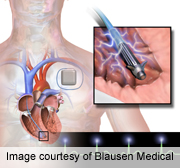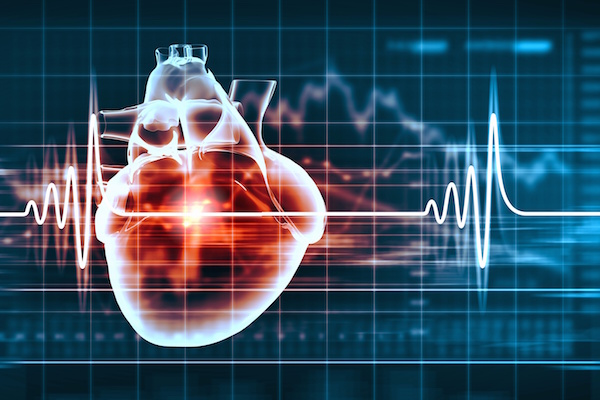
WEDNESDAY, Nov. 7 (HealthDay News) — A simple change to the way doctors program implantable cardioverter defibrillators can help people with heart disease live longer and with greater quality of life, according to a new study.
Implantable cardioverter defibrillators (ICDs) are devices that correct dangerous heart rhythms.
Researchers found that simply raising the heart rate at which the device is set to deliver a shock resulted in an 80 percent to 90 percent drop in unnecessary, distressing and painful shocks for heart rhythms that aren’t life threatening. They also found that patients’ risk of death fell 55 percent compared to patients with traditional ICD programming.
The study was published Nov. 6 in the New England Journal of Medicine and the findings are scheduled for Tuesday presentation at the American Heart Association meeting in Los Angeles.
“The way we’ve been using implantable defibrillators for the last 20 years has really been less than optimal,” said lead study author Dr. Arthur Moss, a professor of cardiology at the University of Rochester Medical Center in Rochester, N.Y. “The extent to which the new programming reduced death and inappropriate therapies was quite striking and has the potential to beneficially affect a wide spectrum of patients who are at risk for sudden death or rhythm disorders.”
The study involved 1,500 patients with heart disease from 98 hospitals in the United States, Canada, Europe, Israel and Japan during a two-year period that ended in October 2011. All of the patients received either an ICD or another type of defibrillator called a CRT-D made by Boston Scientific, the company that sponsored the study.
Most defibrillators are set to administer a shock when a person’s heart rate exceeds about 170 beats per minute. The researchers said, however, that rates of 180 or 190 are not always life-threatening, do not last long and could simply be the result of increased physical activity. They noted that ICDs are not always able to determine which heart rhythms are dangerous in this range.
By setting ICDs at a higher rate of 200 beats per minute, the patients’ risk of receiving an unnecessary shock fell 79 percent, the study found. Fewer shocks also meant less energy delivered to patients’ hearts, which may have lowered their risk of death.
“There is considerable research to suggest that there is a small amount of damage to the heart muscle with each delivered shock,” Moss said. “If we can eliminate the unnecessary shocks, this is going to be associated with less heart damage and improved outcomes.”
Each year, 200,000 ICDs are implanted in the United States, according to the release.
More information
The U.S. National Institutes of Health provides more information on implantable defibrillators.

